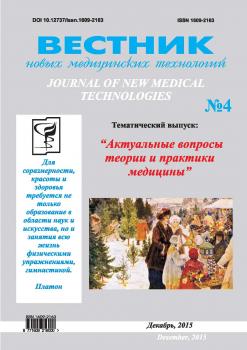The aim of this study was to investigate the effects of rhythmic thermal effects as a means of person´s recovery after intense exercises. Young men with different physical training levels attended the survey. Every subject took part in the two surveys, and in each of them he was offered an increasing in intensity physical activity on a cycle ergometer to failure. Load testing was carried out on the background of constant cadence. However, in the first survey recovery after exercise happened in the saddle ergometer at rest, and in the second - also in the saddle of a bicycle ergometer, but already against the background of the impact of rhythmic thermal incentives. Rhythmic thermal incentives, which temperature is averaged about 30 degrees Celsius, were served with a thermal element, which is housed in the nasolabial triangle of the tested person. The thermal element was turned on for inspiration and off as you exhale. It was allowed to subject subconsciously to regulate the supply of heat by changing the breath pattern. Load testing process was monitoring by ECG and blood pressure measurement. Analysis of the material showed, that the rhythmic thermal impacts might be the effective non-drug method. It may be used to rehabilitate the human functional state after intensive physical activity. When restoring the background of rhythmic thermal impacts of the test improving the subjective well-being, normalization of vegetative balance, reduced the heart rate is a certain level of physical performance. It is established that recovery amid RTI is more likely to be recommended to the persons with high tone of the sympathetic nervous system, since against the background of RTI a marked weakening of the sympathetic effects on the heart was noted, while the recovery process was characterized by more pronounced reduction in heart rate and ended the 6th minute.
intensive physical activity, load testing to capacity, recovery, rhythmic thermal impacts
Интенсивные физические нагрузки при занятиях спортом обязательно должны чередоваться с быстрым и полноценным восстановлением функционального состояния спортсменов. Умение спортсмена восстанавливаться после интенсивной физической нагрузки является залогом его высокой спортивной результативности и сохранения здоровья. В связи с этим поиск методов и средств нелекарственной коррекции функционального состояния и восстановления спортсменов является актуальной задачей, имеющей большую практическую значимость.
Известно, что у спортсменов интенсивные физические нагрузки сопровождаются ростом уровня психоэмоцио-
1. Zilov VG, Minenko IA. Nelekarstvennaya reabilitatsiya posttravmaticheskikh stressovykh rasstroystv razlichnogo proiskhozhdeniya. Vestnik mezhdunarodnoy akademii nauk (Russkaya sektsiya). 2006;2:31.Russian.
2. Karpman VL, Lyubina BG. Dinamika krovoobrashche-niya u sportsmenov. Moscow: Fizkul´tura i sport; 1982. Russian.
3. Klassina SYa. Kompleks reabilitatsionnykh vozdeystviy dlya kompensatsii posledstviy psikhoemotsio-nal´nogo napryazheniya. Fiziologiya cheloveka. 2007;33(5):54. Russian.
4. Klassina SYa, Fudin NA. Ritmicheskie teplovye voz-deystviya kak sredstvo povysheniya rezul´tativnosti sportivnoy deyatel´nosti [Rhythmic thermal impacts as a means of enhancing of sport activity effectiveness]. Vestnik novykh meditsinskikh tekhnologiy. 2013;20(3):125-8. Russian.
5. Trufakin VA, Aftanas LI, Morozova NB, Pokrovskiy VI. Psikhoneyroimmunologicheskie effekty sovremennykh psikho-neyrotekhnologiy v preodolenii postsressornykh sostoyaniy. Rukovodstvo po reabilitatsii lits, podvergshikhsya stressornym nagruzkam. Moscow: Meditsina; 2004. Russian.
6. Fudin NA, Klassina SYa, Chernyshev SV. Reabilitatsiya poststressornykh narusheniy s ispol´zovaniem teplo-kholodovykh protsedur i vitaminnykh kompleksov v sporte [Method of rehabilitation for post stressor disorders person recovery, including thermo-cooling effects and vitamins in sport]. Vestnik novykh meditsinskikh tekhnologiy. 2012;19(2):78-81. Russian.
7. Khanin YuL. Stress i trevoga v sporte: Mezhdunarod-nyy sbornik nauchnykh statey. Moscow; 1983. Russian.
8. Task Force of the European Society of Cardiology and the North American Society of Pacing and Electrophysiology. Heart Rate Variability. Standards of Measurements, Physiological Interpretation, and Clinical Use. Circulation. 1996;87:1043.





